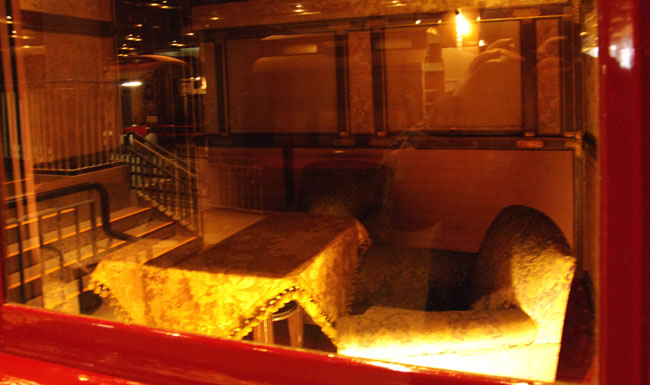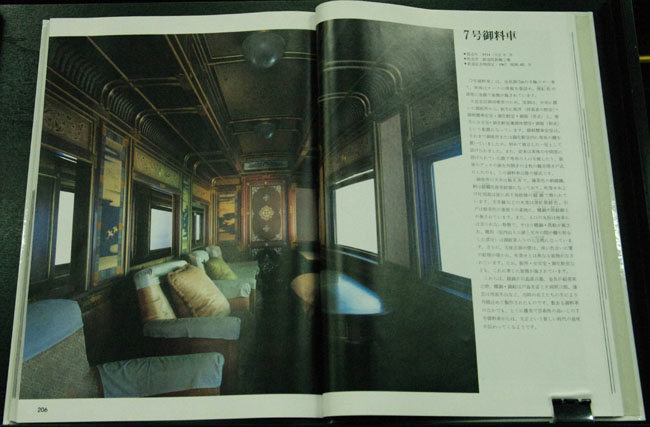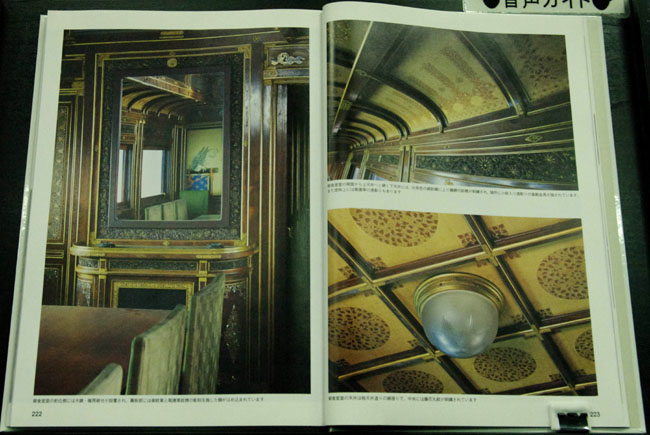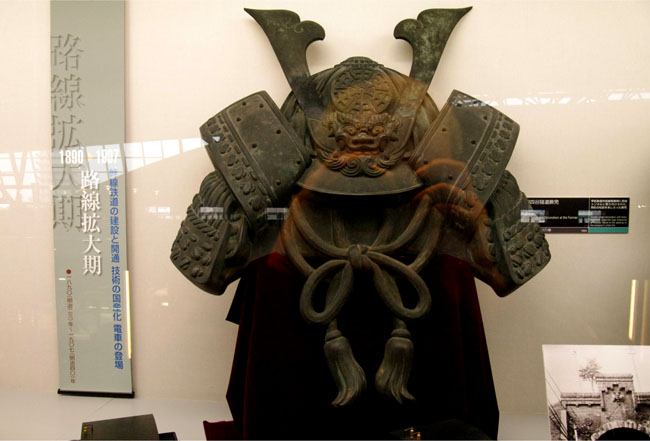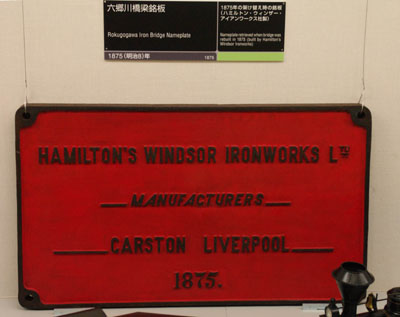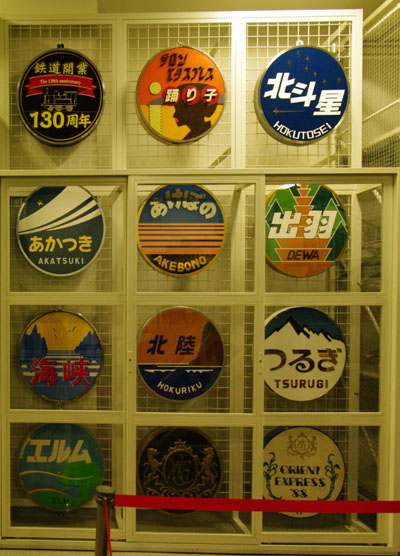|
|
|||||
 |
 |
|||||||||||
|
The Railway Museum was built in Onari, Saitama City as the centrepiece of the JR East 20th Anniversary Memorial Project. The present Railway Museum is the successor to the old Transportation Museum. There is an English language web site available here.
The following photographs show the main display hall of the museum, the first is the view from the entrance area and the second is from the other end of the hall looking back at the entrance area. |
|||||||||||
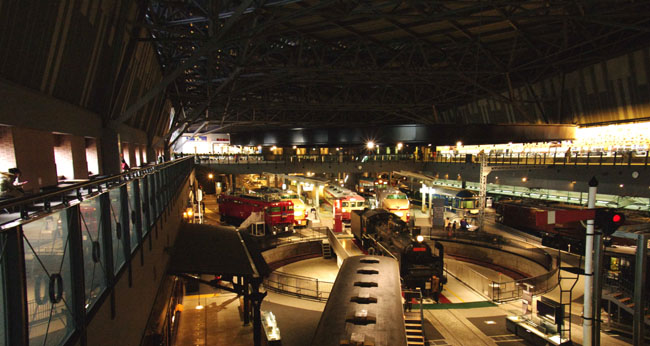 |
|||||||||||
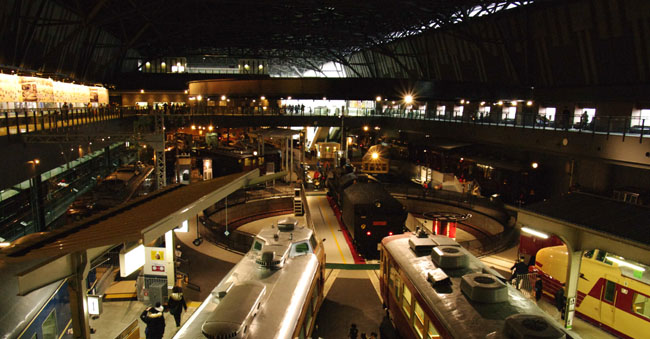 |
|||||||||||
|
The next photograph shows a better view of the exhibits under the raised deck at the end opposite the entrance. |
|||||||||||
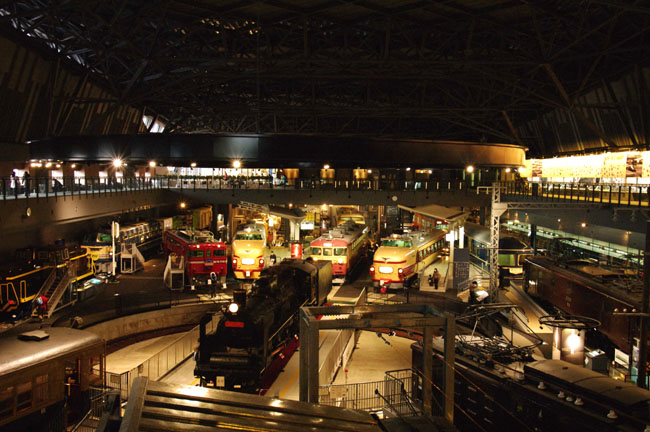 |
|||||||||||
|
The museum includes this early steam train, it is Locomotive No. 1 (Class 150) and was Japan's first locomotive which was used on Shimbashi Yokohama line in 1872 (it was actually built by Vulcan Foundry Lancashire in 1871). There is also a third class passenger carriage which has a mannequin of someone travelling on the roof! |
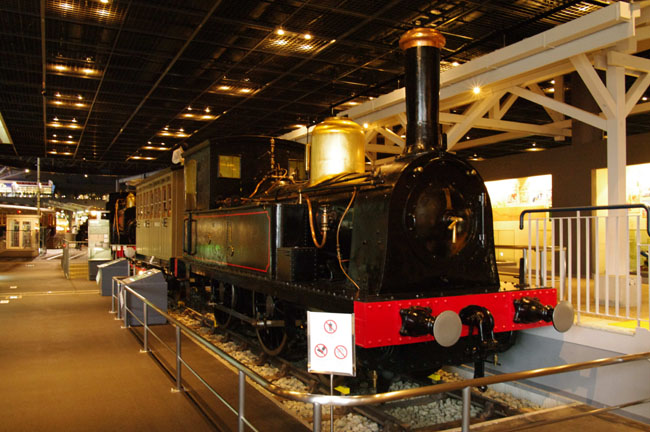 |
|||||||
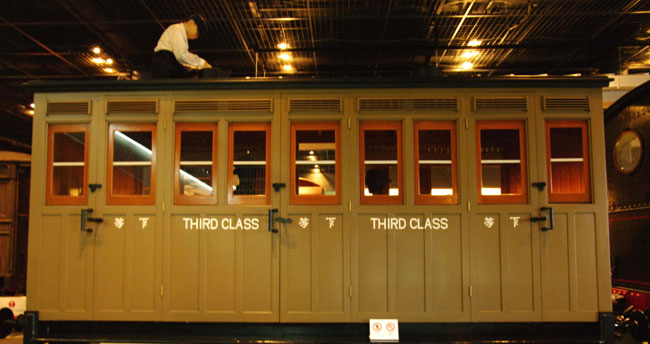 |
|||||||
|
C515 Steam Express, the Class C51 was the first Japanese-built high-speed passenger locomotive used for express services on most important lines such as Tokaido Main Line and later on regional trunk lines, they were manufactured between 1919 and 1927. |
|||||||
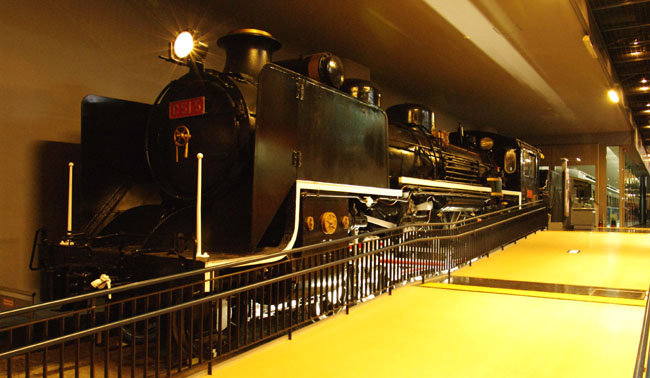 |
|||||||
|
The centrepiece of the museums display of steam locomotives is the Class C57 Steam Locomotive C57135. It was the last steam locomotive used to haul regular passenger trains on Muroran Main Line between Iwamizawa and Muroran in Hokkaido in 1975. |
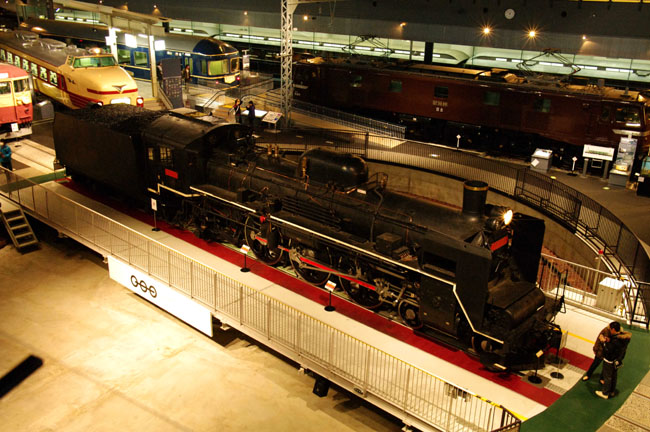 |
|||
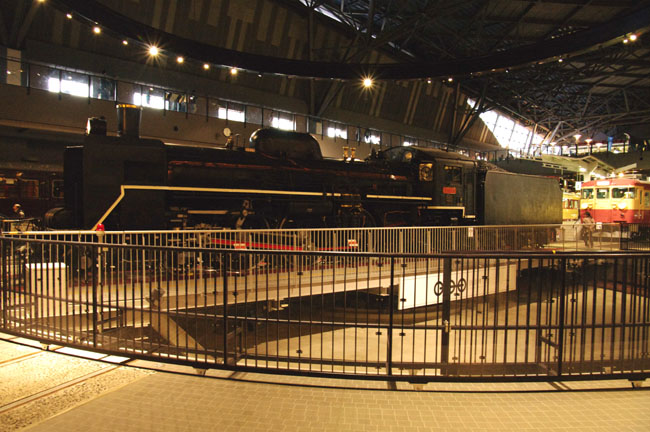 |
|||
|
The museum has among its collection examples of the Shinkansen (literally new trunk line), also known as the "Bullet Train", that run over a network of high-speed railway lines. The photograph below shows the first generation Shinkansen that is preserved along with examples of the marketing material, station fittings etc. |
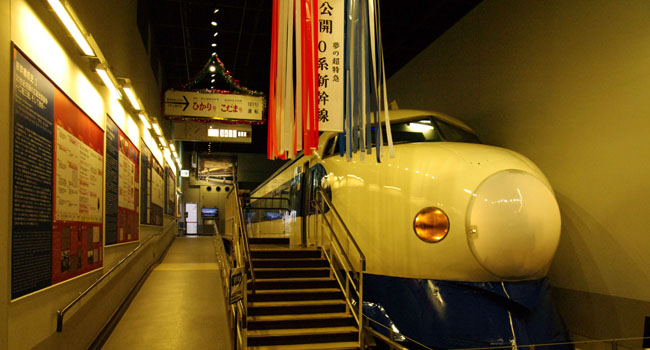 |
|
A major feature of the museum is their collection of coaches from the Imperial Train, these are displayed (behind a glass wall) along one entire wall of the museum. The next three photographs show two carriages that are examples of an early Imperial train (because they are behind glass there are reflections in the photographs). |
 |
|
|
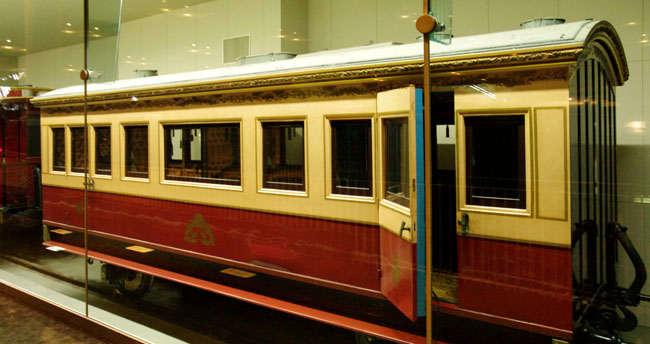 |
|
The next photographs are of the four carriages of the later Imperial Train that, I believe, was in use until around 2000 (again because they are behind glass there are reflections in the photographs). |
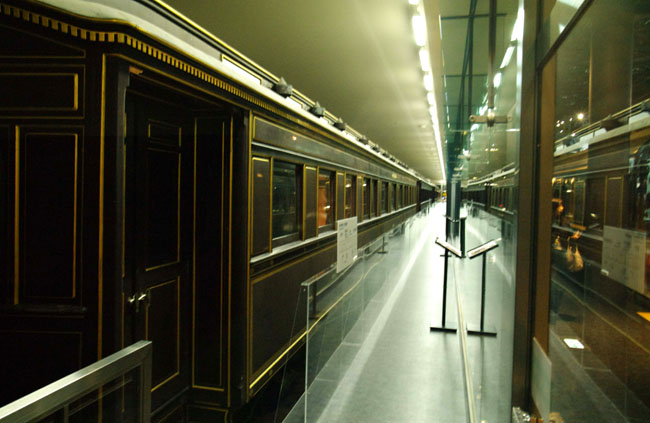 |
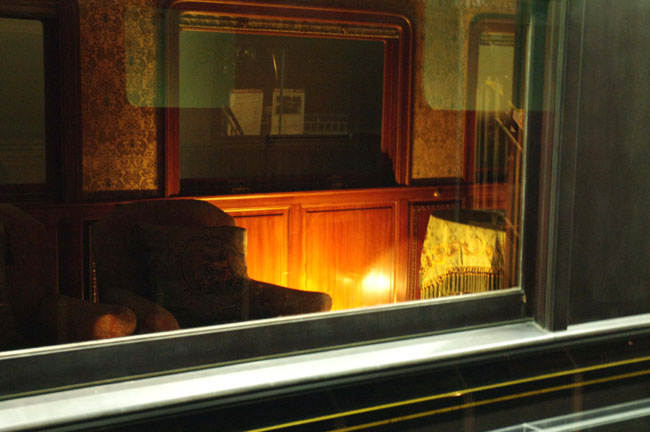 |
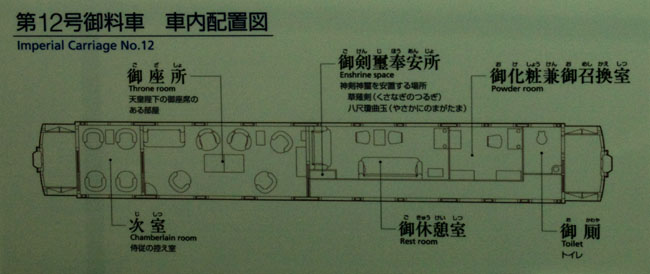 |
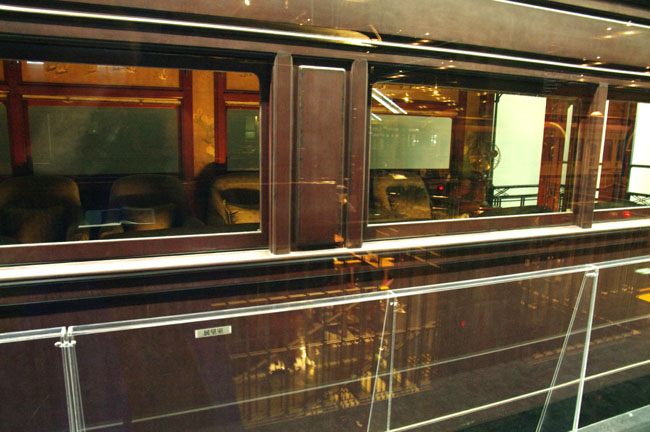 |
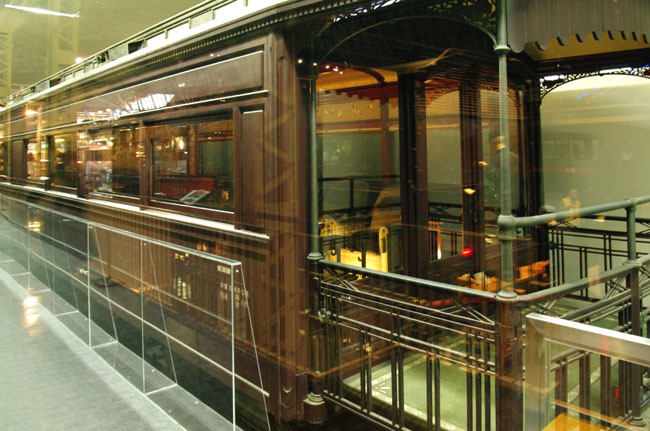 |
|
|
||||||||||||||||||||
|
In addition to whole trains and carriages the museum has a display along one wall of the upper level showing a timeline of the railway in Japan with artefacts and photographs. A couple of examples are given below. |
|
|
|
|
|
|
|
Go to the Tokorozawa Museum page |
|
Go to top of page |
| [New Wildwood] [Contents] [Route 66] [Western Odyssey] [South East USA] [Round the World] [Why Wildwood?] [Site Status and News] |
